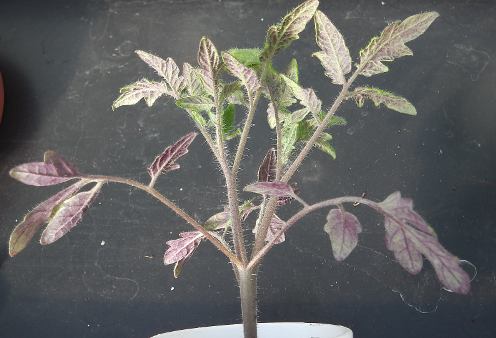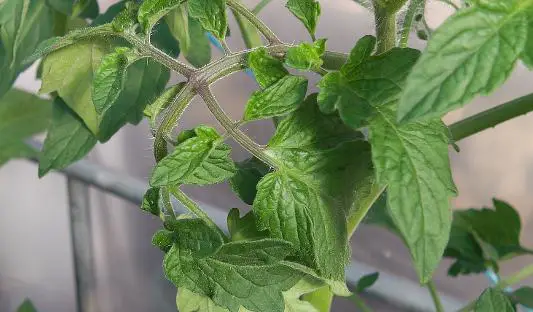It’s a busy time of the season when there are a lot of tomato plants to pot into their final position. It’s also expensive if there are so many large pots to fill with new compost. so using old compost for tomatoes is very tempting!
Sometimes grow bag soil can work out less expensive than bags of multi-purpose compost – a quick calculation is often needed when choosing which compost to buy.
Using Old Compost for Tomato Plants
If like me, you have too many plants and plenty of old compost left over from last season, you may like to try an experiment and use some of the old stuff from last season’s large pots.
Remove the top layer – the weeds and seeds
Tip out and expose to the sun for a week or so (solarisation)
Dig and get plenty of air in the soil
Fertilise with any or all of the following:
Dry Fertilisers:
- Fish, blood and bone
- Chicken manure pellets
- Slow release fertilisers
Soil Improvers:
- Grow Char – Carbon Gold
- Rockdust
Liquid Fertilisers:
- Seaweed Extract
- Fish Emulsion (Bio Bizz)
- Home made teas
If that lot doesn’t rejuvenate old soil, nothing will!
By growing disease resistant varieties, usually having the the suffix “VFN”, we can further prevent our plants from getting diseases from old soil.
The only caution is if your plants suffered a serious disease last season such as blight, it’s best not to re-use the soil they were growing in.
Of course most of my plants go into new compost mixed with perlite – we all know how important oxygen is for plant roots!
Growth Limiting Deficiencies
A lack of nitrogen is the main reason why plants may grow slowly. If your plants need more nitrogen they will display pale green leaves, yellow leaves at the bottom of the plant and even flower buds may fall off.
Another growth limiting deficiency is phosphorus. This is displayed as a purple tinge on the underside of leaves. The plants and leaves become stunted and the leaf surfaces are a very dark green.

Both of the above nutrient problems can be caused by keeping young tomato plants in their small pots for too long.
A time scale that works well is:
- Three weeks in the seed tray
- Three weeks in a smaller pot – 3 inch or 3 and a half inch (9cm).
- Three weeks in a bigger pot – around 5 inch.
- Plant in final container/grow bag – container size around 10 to 15 litres (around 3 to 4 gallons).
This means that if we sow in mid March, the plants will go into their final container towards the end of May after the last frost.
Why use so many potting stages?
I’m often asked why we use so many potting on stages – why we don’t just plant directly in the ground.
Apart from the slugs, snails and diseases associated with garden soil that would kill our vulnerable plants, when roots feel the sides of a pot the plants mature more quickly. The trick is to push them on without them becoming root bound or lacking an important nutrient as in the example above.
Protection from the sun
Garden fleece is very useful at this time of the season for covering plants on cold nights and protecting seedlings from direct sunlight during the midday sun.
When sunlight is too strong for a plant, it will sometimes turn or bend a leaf branch away from the light.
Here’s an example of a Bejbino cherry variety bending a leaf branch down and away from the hot sun.

Thanks to Buster for the very nice plants!
That’s it for this week … I’m spending the rest of the day tomato-ing!
Regards,
Nick
Hot Tips!
Protect seedlings from direct sunlight with garden fleece.
Pots dry out very quickly in the sun – if going out for the day make sure plants have plenty of water or put them in partial shade.
It’s good to reduce the strength of liquid feed in hot weather because plants need more water than food.
Wilting plants should be put in the shade and misted with water.
Using old compost for tomatoes is best avoided, unless it is given the treatment mentioned above.


pottedpotpotter
The article is very helpful. Thank you for writing it.
Could you put your post size recommendations adjacent to the items in the per pot timescale list? something like: Smaller Pot (3-5″)?
Nick
Done!
Rhys Jaggar
Nick
Whilst I’ve not been formally experimenting, I have to say that the Biodynamic approach I’ve used this year has been very, very successful. Yes, of course the sunlight hours have been huge too, but the plants certainly don’t object to using the Maria Thun calendar system. I’ve done all my transplanting, potting on, removal of suckers and feeding of seaweed extract on fruit days. Watering has been slightly less rigorous beyond the 10 week stage as the plants need watering more often during warm spells than a 10 day cycle provided by the calendar (I guess you could water 3 days running then let the plants ‘dry out’ for 9 days before repeating, but I didn’t do that to date).
I’m certainly intending preparing seeds using fruit harvested on a Fruit Day in late August, which the theory says is the best time to do it. Of course, they wouldn’t be Demeter standard biodynamic seeds as I’ve not grown the plants in the soil but it’s certainly closer to it than not.
By the way, the Glacier plant will be slightly later in producing a harvest than Maskotka but I’ve already got 30+ fruit set and growing on Glacier, whilst Maskotka has more than I can count visually (tomorrow is counting day). Because Glacier is a salad tomato and not a cherry, I guess it will always be later than Maskotka, but it’s certainly proving to be a great candidate for a January/February sowing for those without greenhouses. The one thing I’ve not been able to test this year is the cold tolerance of Maskotka, simply because it’s been so mild/warm/hot since I’ve had the plant outside full time.
Sub-Arctic Plenty is also coming on nicely, slightly slower than Glacier but fruit set on at least two trusses now. It’s also a very good candidate for early sowings, being very cold tolerant.
Black Cherry just has one truss fully set but I now have 10 trusses visible on 4 main leaders – I’m trying to generate 8 growing tips with 4 support canes to see if I can get 32 or 40 trusses by mid July!! Then I can spend 2 months ripening them up. I’ll take whatever I get though…
I’m wondering whether I can eat first early tomato and first early potato on 31st May this year??!!
Will be close to it, if it fails……..
magdalena m. clerigo
hi neck,
pls. advise me on what to do of my bearing tomatoes which suddenly withered, though not all of them. Only one of them upon inspection which i oftentimes do usually every morning. I suspect a certain viral may cause the plant to die.
help me to avoid the same problem for my next planting schedule.
expecting your advise and regards
maggie
Nick
Hi Maggie,
It’s very difficult to know what the problem is without a photo of the plant and a description of the growing conditions. If only one plant has wilted, I wouldn’t worry too much but there are several fungal wilt diseases and even more viruses that can cause this problem. I think it would have affected more than one plant if it was a serious disease.
When plants wilt, the only thing you can do is shade them and spray/mist with water.
Regards,
Nick
Rhys Jaggar
Nick
Reviewing my own records this season, I must say that our potting on strategies are very similar, except that I transplant seedlings about 8 – 10 days after sowing into 8cm pots and leave them there for 4 – 6 weeks (longer if I sow in February, less time if I sow in April), then do 3 weeks in 15cm pots. All my 12 plants which have so far reached their final homes did so either 9 or 10 weeks after sowing.
My February plants all have tomatoes set now, my March plants all have flowers on them and my early April plants are about to form their first truss and will be put in their final pots in 1 or 2 weeks time. I have completely struck out trying to sow Red Alerts – no idea why!! I will have one final go as the main aim is to make my own set of seeds!!
As for old compost, other very good gardeners are known to use their spent tomato compost for their potato growing in pots the next year before transferring it to the compost heap/garden. I plonked some 2 seasons ago on a patch which grows shallots each year and they did fine last year. This year, the second after getting some rock dust, they are prodigious – probably due mostly to the warm weather. Last year, I made a raised bed out of a combination of spent tomato foliage, spent tomato compost and horse manure and it is growing lettuces, beetroot, garlic very well this year. Unfortunately it is also attracting ivy from the overgrowth at the bottom of the neighbour’s garden, so a shifting of raised bed and walkways is necessary in the autumn.
Nick
Hi Rhys,
Good to hear your progress as always!
I get a sense of relief when plants go into their final home – easier to water too!
Doing quite a few experiments and comparison tests this season which I find very exciting and I’ll keep you updated as and when.
Cheers,
Nick
sonny
Thanks Nick, the ( Protection from the sun ) part was a real help to me as i’m having some off these issues .
Regards Sonny.
jess allaway
Hi Nick, I wonder if you can advise me. Got my 6 x 10L air pots and filled one as advised with fine compost but then had difficulty wetting it through – I plunged it into fairly deep water eventually to do that. I wouldn’t be able to do that when plants are big and the raised base on these pots makes trays or saucers too shallow. With my normal pots I sink a small pot down the side to get the water nearer the roots, but that isn’t an option with air pots. Read somewhere to add wash-up liquid to water to “break water tension” when watering from top but would that harm the tomato plants? If I have to move on to drip feed, can’t see any tubes etc for sale that don’t include the pots! Any ideas how else I can water these pots? Thank you for another interesting newsletter. Regards Jess.
Nick
Hi Jess,
It’s a good idea to water very slowly around the stem, or you could add a wick made out of capillary matting which can be inserted when the base is attached. Check out this newsletter from last season:
https://www.tomatogrowing.co.uk/newsletter/forcing-tomato-plants/
Also make sure you have the closed holes at the top – it is an issue with air pots that they have open holes too close to the top rim.
Rather than add washing up liquid directly, I like to add a cup of old washing up water from the bowl to a watering can – it’s a bit less harsh and still acts as a wetting agent.
Regards,
Nick